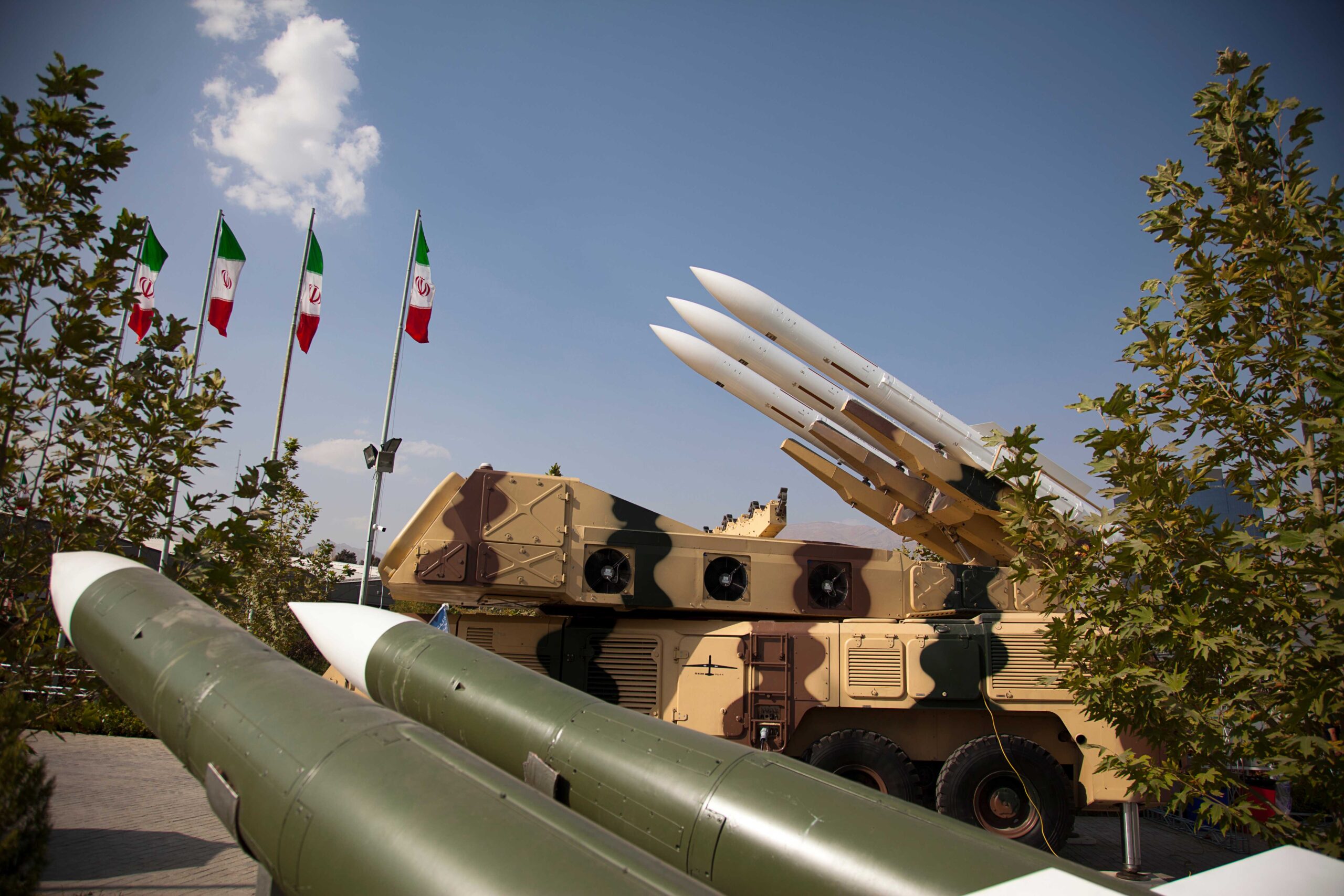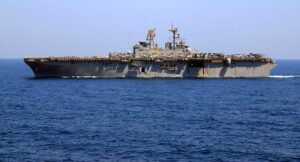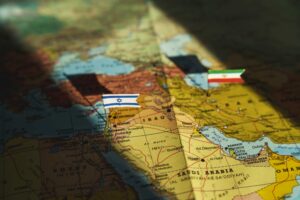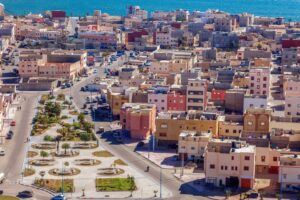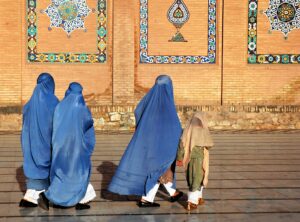Shortly before the one-year anniversary of the outbreak of the Israel-Hamas war, the conflict escalated on the Lebanese front too with the assassination of Hezbollah leader Hassan Nasrallah.[i] This followed the targeted killing of Hamas leader Ismail Haniyeh in Tehran[ii] in July earlier this year. These developments have highlighted a critical vulnerability in Iran’s strategy of relying on regional proxy groups and their strongmen to maintain influence across the Middle East. For decades, Tehran has used groups such as Hamas, Hezbollah and others to counterbalance Israel’s military superiority.[iii] However, the recent assassinations by Israel have dealt a significant blow to the integrity of this alliance and signaled the limits of this strategy. As Iran considers its strategic options going forward, it may feel compelled to accelerate its program for nuclear enrichment[iv], viewing nuclear capabilities as the ultimate and only truly reliable deterrent to future threats against itself and its strategic interests in the region. This situation increases the urgency of attempts to revive the Joint Comprehensive Plan of Action (JCPOA)[v], and prevent Iran from further nuclear proliferation.
Iran’s strategy
Iran’s broader strategy over the years has been to use a network of armed non-state groups.[vi] It has fortified its influence across the Levant and in the Gulf by supporting groups like Hezbollah in Lebanon, armed a number of militias in Syria and Iraq, the Ansar Allah, or Houthi, movement in Yemen[vii] as well as Hamas in the Gaza Strip. By arming and backing these groups, Iran has been able to project its power across multiple fronts without directly engaging in cross-border military action.
This approach of asymmetric warfare[viii] has allowed Tehran to achieve its goals with less risk of entangling itself in direct conflict. At the same time, its proxy groups served as force multipliers, expanding Tehran’s influence without the need for significant military deployments.
This network of proxies has successfully functioned as the so-called ‘Axis of Resistance’ for decades. The assassination of Nasrallah has, however, deeply disrupted Hezbollah’s leadership and operations, and with it, destabilized part of the Iran-backed network. As the face of Hezbollah, Nasrallah played a key role in maintaining support, coordinating operations, and ensuring the organization’s cohesion. His assassination not only demoralizes Hezbollah’s ranks but also disrupts the relationships Iran has cultivated with some of its other proxies. Nasrallah was a crucial additional link between Tehran and its regional allies.[ix]
Moreover, Israel’s ability to eliminate key figures[x] within the axis demonstrates that asymmetric warfare cannot fully shield Iran from suffering major setbacks. When Iran’s allies are weakened, its broader strategic objectives suffer the consequences too. This development forces Tehran to reconsider its reliance on proxies as the cornerstone of its regional strategy, suggesting a potential change in how Iran approaches its regional power projection.
Revival of JCPOA
The issue of Iran’s nuclear program has come back to the foreground of strategic issues—if it has ever gone away—as a direct Israel-Iran rivalry intensifies and aerial attacks on each other’s territory take place[xi], as it was already the case in the past few months. There is a deep concern that Iran’s setbacks will compel it to divert resources to its nuclear program and make a sprint for a nuclear weapon[xii] to buttress its deterrence posture against Israel. As the Israeli leadership’s warnings to Iran pick up the pace, Iranian officials are signaling a change in their nuclear doctrine. Kamal Kharrazi, a senior advisor to Iranian Supreme Leader Ali Khamenei, announced in May—following the April escalation with Israel—that Iran has made “no decision to build a nuclear bomb,”[xiii] but retaining this policy would be contingent on Iran’s continued territorial integrity. He warned that “should Iran’s existence be threatened, there will be no choice but to change our military doctrine.” An attack on Iran’s nuclear sites and the consequent loss of its deterrence power would certainly constitute such a scenario.
As long as Israeli, Western and regional concerns about the Iranian nuclear program are not comprehensively addressed, the spectre of a larger military conflict will continue to linger over the Middle East. As far as Israel is concerned, targeted strikes on Iran’s nuclear sites are definitely on the table. Avigdor Liberman, Israel’s former defense minister, has urged the Israeli government to employ “all the tools”[xiv] it can amass to demolish Iran’s nuclear facilities. And while Israel’s 1981 attack on Iraq’s Osirak reactor provides a precedent for such an operation[xv], carrying out a similar maneuver against Iran would prove more complicated, considering the distance the Israeli air force would have to cover in addition to the fact that Iran’s nuclear production capabilities are scattered across three separate sites in the country.
Building a nuclear bomb in Iran would, however, also create a significant sense of insecurity for other regional powers, like Saudi Arabia, the UAE, and Turkiye, with notable resources of their own to mobilize against Iran, or at least in support of a military coalition aiming to disarm the Islamic Republic.
What’s next?
There is an understanding in Israel that defeating Iran through ‘conventional means’ alone would be difficult.
While returning to the negotiating table with Iran to revive the nuclear agreement is more desirable than ever, there are a number of factors that point towards the fact that further escalation is likely, or a continuation of fighting at its current level of intensity at the very least. Israel’s ongoing offensive against Hezbollah and its military infrastructure in Lebanon will likely keep eroding Iran’s perceived deterrence power, making nuclear proliferation—or the threat of it—increasingly appealing.
The threat of going nuclear could nevertheless trigger an international intervention pooling many of the currently ‘neutral’ powers of the region. This is a strategic risk Iran is well aware of. For the time being, the threat of nuclear proliferation—with Iran’s extremely short nuclear breakout time of one-two weeks—is likely considered as a more effective deterrent in the eyes of the Iranian regime.
In addition to this, the ‘Axis of Resistance’ is far from falling apart, despite the likely organizational and ideological losses that Haniyeh and Nasrallah’s killing will present. Iran-backed militias in Syria and Iraq count tens of thousands of fighters amongst their ranks, while Hezbollah itself is expected to be as much as ten times as large in membership as Hamas in the Gaza Strip was. Hezbollah’s unusually large stockpile of c. 120,000 rockets reserve some notable hard power for a potentially coming counterattack. Houthi missile strikes, while reaching Israel’s southern borders over the past year, have been less effective at posing actual strategic threat, but they should not be ignored in strategic calculations considering the psychological impact they have on Israeli society.
Iran’s asymmetric war has not run out of steam just yet, and while the military resources it so carefully built up across the Levant during the past decades last, it will prefer to wage its war by proxies rather than on its own soil.
[i] Al Jazeera (2024). “Israel kills Hezbollah leaders Hassan Nasrallah in air strike on Beirut”, 28 September 2024, retrieved from: https://www.aljazeera.com/news/2024/9/28/israels-military-says-it-has-killed-hezbollah-leader-hassan-nasrallah.
[ii] Al Jazeera (2024). “Hamas political chief Ismail Haniyeh assassinated in Iran”, 31 July 2024, retrieved from: https://www.aljazeera.com/news/2024/7/31/hamass-political-chief-ismail-haniyeh-assassinated-in-iran-state-media.
[iii] Sharifi, K. (2024). “Iran Versus Israel: Who Has The Military Edge?”, Radio Free Europe, 19 April 2024, retrieved from: https://www.rferl.org/a/iran-israel-missile-drone-military-threat-advantage/32912499.html.
[iv] Davenport, K. (2024). “Iran Accelerates Highly Enriched Uranium Production”, Arms Control Association, February 2024, retrieved from: https://www.armscontrol.org/act/2024-02/news/iran-accelerates-highly-enriched-uranium-production.
[v] Robinson, K. (2023). “What Is the Iran Nuclear Deal?”, Council on Foreign Relations, 27 October 2023, retrieved from: https://www.cfr.org/backgrounder/what-iran-nuclear-deal.
[vi] Robinson, K. and Merrow, W. (2024). “Iran’s Regional Armed Network”, Council on Foreign Relations, 15 April 2024, retrieved from: https://www.cfr.org/article/irans-regional-armed-network.
[vii] Wilson Center (2022). “Who are Yemen’s Houthis?”, 7 July 2022, retrieved from: https://www.wilsoncenter.org/article/who-are-yemens-houthis.
[viii] Boussel, P. (2024). “The IRGC Navy’s long-term strategy of asymmetrical warfare”, Foundation our la Recherche Strategique, 6 May 2024, retrieved from: https://www.frstrategie.org/en/publications/notes/irgc-navy-s-long-term-strategy-asymmetrical-warfare-2024.
[ix] Panikoff, J. (2024). “After Nasrallah, three quandaries shape the future of the war—and the Middle East”, Atlantic Council, 29 September 2024, retrieved from: https://www.atlanticcouncil.org/blogs/new-atlanticist/after-nasrallah-three-quandaries-shape-the-future-of-the-war-and-the-middle-east/.
[x] Jaber, S. (2024). “Hezbollah has been dealt a heavy blow, but it can still win against Israel”, Al Jazeera, 1 October 2024, retrieved from: https://www.aljazeera.com/opinions/2024/10/1/hezbollah-has-been-dealt-a-heavy-blow-but-it-still-can-win-over-israel.
[xi] Gritten, D., Murphy, M. and Jackson, P. (2024). “What we know about Iran’s missile attack on Israel”, BBC News, 1 October 2024, retrieved from: https://www.bbc.co.uk/news/articles/c70w1j0l488o.
[xii] Batmanghelidj, E. (2024). “Iran has tried to avoid conflict with Israel and failed—which deterrent will it reach for next?, The Guardian, 30 September 2024, retrieved from: https://www.theguardian.com/commentisfree/2024/sep/30/iran-israel-conflict-middle-east-nuclear-bomb.
[xiii] Al Jazeera (2024). “Iran warns it will change nuclear doctrine if ‘existence threatened’”, 9 May 2024, retrieved from: https://www.aljazeera.com/news/2024/5/9/iran-warns-it-will-change-nuclear-doctrine-if-existence-threatened.
[xiv] Middle East Eye (2024). “Israeli opposition leader Lieberman says ‘all means’ should be used to destroy Iran’s nuclear programme”, 3 July 2024, retrieved from: https://www.middleeasteye.net/news/opposition-leader-says-israel-must-use-all-means-destroy-irans-nuclear-programme.
[xv] Association for Diplomatic Studies and Training (2024). “The Israeli Strike on the Iraqi Reactor at Osirak”, retrieved from: https://adst.org/2015/08/israeli-strike-on-osirak/.


